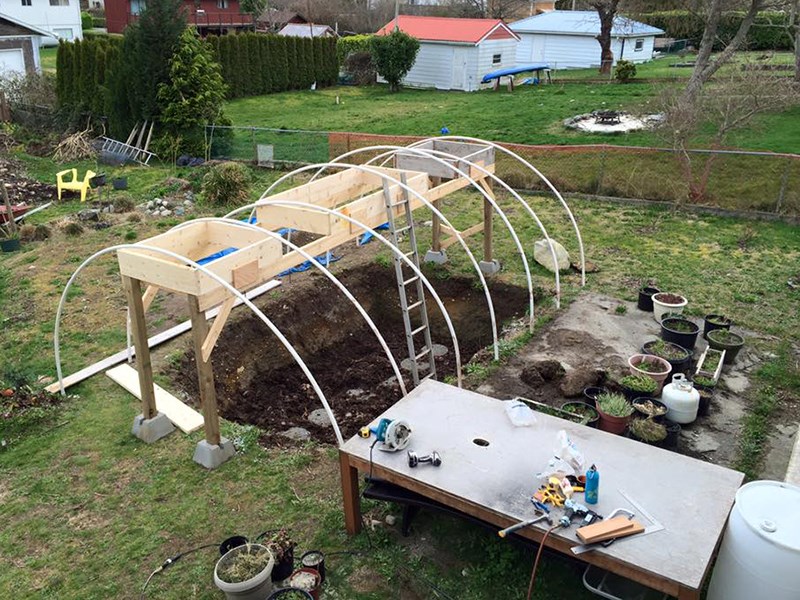Do the fall leaves have you anticipating the first frost and loss of your garden greens? Fear not, there may be a fall project (or two) that will extend your growing season throughout much of the fall, and even into the winter.
Herb gardens are a great place to start. Most households have a few clay pots kicking about, and transplanting some of your favourite herbs into these can make an attractive, edible window dressing. Choose a south-facing window as close to your kitchen as possible.
Greenhouses and atriums are also effective heat traps that can be repopulated with transplants from your outdoor garden this time of year. Even simple cold frames made of straw bale walls with a pane of glass slapped on top can add a few weeks to an outdoor bed.
But, if you really want to get growing, and have an excavator nearby (or some willing minions to get digging), you can make a walipini. Dug six to eight feet into the ground, a walipini (indigenous Bolivian term meaning “warm place”) takes advantage of the phenomenon known as the “thermal constant.” Below a depth of four feet in the ground, temperatures stay a toasty 10 to 15 degrees Celsius despite much chillier temperatures at the surface. Typically rectangular, a walipini faces its longer edge toward the south to catch the most sunlight.
If digging in a greenhouse is a bit ambitious, then how about planting some fruit trees along the side of your house where even tropical fruit can survive? Lemons, figs, olives and more can successfully grow in the Pacific Northwest given the right conditions.
South-facing walls along the side of a home are often a microclimate, heating up even in the winter sun, and holding the freezing winter temperatures at bay. Wrapping fruit in faerie lights for the deep of winter will prevent freezing.
Another ingenious way to heat up your greenhouse is to compost your yard waste, kitchen scraps and garden greens inside it. If you have a large enough space, your plants will enjoy the heat created during the composting process.
You can also make use of large barrels you may have laying around. Paint the barrel black and fill it with water, and you’ll have a thermal mass in your greenhouse capable of capturing the sun’s heat and redistributing it at night.
A longer term project for extending your growing season can be to attach a greenhouse to the south wall of your house. Fewer building materials are needed and the garden benefits from the latent heat from the house. The garden is comfortably accessed during all times of the year directly from the house, ensuring more of your garden greens get eaten.
Indoor tower gardening is also becoming popular these days. Plants grow hydroponically in vertical pipes with holes drilled in to place plant starts. You can build your own, or support local companies selling kits with indoor grow lights that boost the health of your greens.
The joys of growing food close to home, like saved time and the satisfaction of knowing where your food is coming from, are perhaps self-evident. The note-so-insignificant bonus for the planet, however, might be less apparent.
When we grow at home, we eliminate greenhouse gases from transportation and the waste of single-use packaging. Benefits to the earth add up when we use repurposed materials to create our greenhouses, cold frames and more.
Perhaps gardening isn’t your thing. You can still support local gardeners by visiting the Winter Farmers’ Market at the Community Resource Centre on Saturdays from 10 am to 12 pm.
Whatever the colour of your thumbs, having more greens in your life is a great way to start out the next season.
Let’s Talk Trash is qathet Regional District’s waste-reduction education program.



